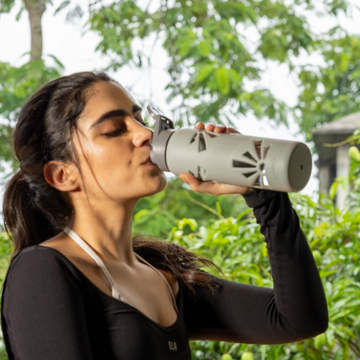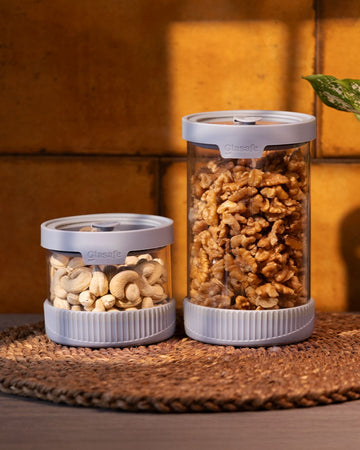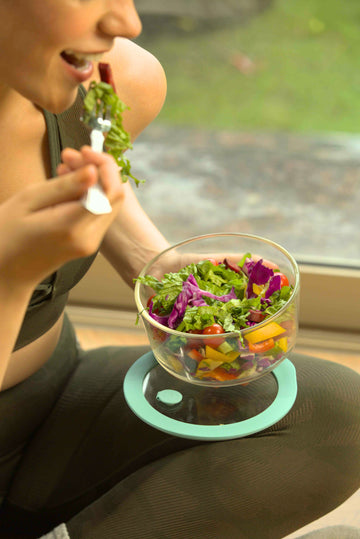We all use plastic water bottles while working out, on the run, and at work. They seem practical, inexpensive, portable, and lightweight. However, many of us are unaware of the hidden dangers that lie beneath this ease.
Microplastics and BPA may be familiar to you, but they are only the beginning. Here are five little-known, scientifically-backed risks associated with plastic water bottles that can subtly impact your environment, water quality, and even your health, often in unexpected ways.
How Old Plastic Water Bottles Slowly Release Hidden Contaminants
Most individuals don't realize that plastic also has an expiration date.
When your bottle is squeezed, refilled, or washed, it experiences micro-aging. Invisible stress cracks emerge, allowing minute pieces and contaminants to escape into your water. Even if you can't see or smell the difference, the plastic's molecular structure is degrading silently.
What really happens:
-
Heat, UV radiation, and repetitive washing all deteriorate polymers over time.
-
This breakdown produces aldehydes and acetone derivatives, which are known to cause unpleasant taste and discomfort in the body.
-
Aged plastic tends to retain bacteria in these micro-cracks, making "old bottles" significantly more contaminated than fresh ones.
Most bottled water brands print “best before 12 months” for the water, not the bottle. But the bottle’s life could effectively be much shorter, especially in warm climates like India.
The Truth About BPA-Free Plastic Bottles
We have all been encouraged to look for "BPA-free" labels and be relieved when we find them. However, many people are unaware of the following: BPA-free plastics frequently include BPS (bisphenol S) or BPF (bisphenol F), which can function similarly to BPA in the human body.
These "replacement" chemicals were introduced to avoid the negative publicity around BPA, but early research shows they can still disrupt hormones, impact fertility, and even change brain development in children.
Fun fact that isn't so fun:
When subjected to heat, one 2023 study discovered that BPS leaching from "BPA-free" bottles was comparable to that of old BPA bottles.
The term "BPA-free" is not universally regulated; it only denotes that BPA is not present, not that the substance is completely safe. So when you see “BPA-free,” don’t read it as “risk-free.” The problem just changed its name tag.
Know What Happens When You Leave Plastic Water Bottles in the Sun
You are probably aware that leaving a plastic bottle in your car on a hot day is hazardous. But did you know that plastic may undergo chemical transformations when heated?
When PET bottles are frequently exposed to sunshine or temperatures above 50°C, the polymers can degrade and recombine, yielding new chemicals, including formaldehyde and acetaldehyde. Both are recognized irritants, and formaldehyde is even classed as a possible human carcinogen.
Worse, these molecules not only remain in the water but also affect its pH and taste, making it somewhat acidic. If you have ever observed that bottled water "tastes off" after sitting in the heat, it's not your imagination. It is actually chemistry.
Can Plastic Bottles "Reinfect" Clean Water?
Even if the water within is cleaned or mineralized at the plant, the bottle itself can pollute it once sealed.
Here's how:
Microparticles from machinery and packing dust settle inside bottles during the production and bottling processes. When the bottle is filled and sealed, the impurities remain trapped. Friction can release micro debris into your drinking water.
Furthermore, many local bottlers employ low-cost recycled plastics, which may include residues from prior contents such as detergents, oils, or industrial solvents. Even if they are "cleaned," remnants can remain at the molecular level.
So, ironically, your "purified" water may be picking up undetectable pollution from the bottle it is in.
The Biofilm Problem: Why Reused Plastic Bottles Can Harbor Bacteria
Almost everyone is surprised to learn that plastic may form biofilms.
When you drink directly from a plastic bottle, your saliva and environmental microorganisms leave minuscule traces on the inside walls. Over time, these microbes build a biofilm, a slimy, invisible covering that clings tenaciously to plastic surfaces.
Even after washing, biofilms can linger because plastic is slightly permeable at the microscopic level. Once created, these films shield bacteria from cleaning chemicals while allowing them to grow fast.
What was the result?
-
After only one week of use, a reused plastic container can contain more bacteria than a toilet seat.
-
E. coli and Staphylococcus aureus colonies were discovered in commonly reused bottles.
-
Heat or sunlight promotes this process even further.
If you have ever noticed your bottle's inner surface becoming foggy, sticky, or smelling faintly, it's time to discard it.
Why Borosilicate Glass Bottles Are the Healthiest Alternative to Plastic
If you actually want to avoid these lesser-known hazards, it's time to abandon all plastic, not just the nasty sort.
This is where borosilicate glass bottles, such as those used by Glasafe, come into play. Unlike plastic, these are the features of borosilicate glass:
-
Even when exposed to high temperatures, it does not absorb chemicals.
-
Does not age, discolor, or leak micro fragments.
-
It is fully non-porous, which means no bacteria or biofilm buildup.
-
Keeps water pure, odorless, and clean.
Glasafe's glass bottles are made of 100% quality borosilicate glass, the same material used in high-end labware, and have protective silicone sleeves that provide grip and style while protecting against impact. They are stylish, reusable, and perfectly safe for daily hydration.
If you have been refilling the same plastic bottle for weeks (or months), it's time to switch.
Final Thoughts
Plastic bottles have served their purpose for decades, but there is a hidden cost that we are only now discovering. Every sip from an old or heated plastic bottle may include more than just water, including chemical transformation and bogus "BPA-free" claims, as well as biofilms and concealed aging.
The solution is quite simple. Go glass. Go Glasafe.
Stay hydrated as nature intended: pure, safe, and transparent in every manner.
FAQs
Are plastic bottles really harmful?
Yes, plastic bottles are detrimental to both health and the environment due to chemical leaching and plastic pollution. Chemicals like BPA can leach into the water, especially when exposed to heat or prolonged storage, causing severe health issues while also contributing to pollution, harming wildlife, and exacerbating climate change.
What are the 10 harmful effects of plastics?
The harmful effects of plastics include environmental pollution, serious health issues like cancer, endocrine disruption, and reproductive disorders, harm to wildlife, negative impact on the immune and nervous systems, brain abnormalities, attention-deficit/hyperactivity disorder (ADHD), prematurity in newborns, and others.
Is it better to drink from glass or plastic bottles?
It’s always better to drink from glass water bottles because they are BPA-free, contain no chemicals or toxins, and keep water pure even when exposed to heat or sunlight. Plus, glass bottles are recyclable and can be used multiple times.
Should I stop drinking bottled water?
Yes, you should consider stopping or significantly reducing your consumption of bottled water due to health and environmental concerns. Bottled water contains microplastics and chemicals that can leach into the water, and it is way more expensive and environmentally damaging.
What are the long-term effects of drinking bottled water?
Long-term drinking of bottled water can lead to chronic inflammation, hormonal imbalances, and increased risk for conditions like diabetes, obesity, and certain cancers. Exposure to chemicals like BPA and phthalates from plastic bottles is also linked to reproductive and metabolic issues.
What to drink instead of plastic water bottles?
Instead of plastic water bottles, you should switch to reusable glass water bottles, stainless steel bottles, and BPA-free options.
What is the safest material to drink from?
The safest water bottle material is glass. It’s 100% non-toxic, BPA-free, and doesn’t leach chemicals into water. Glass bottles are non-porous and don’t react with acidity, so they’re safe for daily hydration.
Is milk better in glass or plastic?
Glass is better for milk due to its superior freshness, taste, and health benefits, as it is non-porous, chemical-free, and better at blocking light and oxygen
Who should drink in silver glass?
Anyone can drink from a silver glass, but the practice is often recommended for those who want potential health and wellness benefits, like improved gut health, and for people who want to align with astrological principles related to the moon and balancing body energies.
How long can you reuse a plastic water bottle?
You can use plastic bottles only for a short period of time, only for a few days. However, single-use plastic bottles are only meant for single use only and should not be reused.




